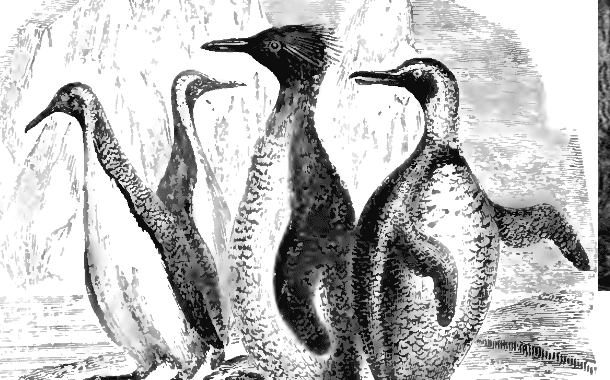<![CDATA[The emperor penguin is the tallest and heaviest penguin in existence, as they are able to reach heights of up to 1.22 m (48 in), and can weigh up to 45 kg (99 lbs). Now a study done by archaeologists working in Antarctica has found evidence of a prehistoric species of penguin that dwarfs the emperor penguin. That species of penguin is called Palaeeudyptes klekowskii, or Klekowskii penguins for short, and it lived on the Antarctic coast 37 to 40 million years ago. The fossils of these penguins were excavated on Seymour Island, which is located off the Antarctic peninsula by Dr. Carolina Acosta Hospitaleche and Marcelo Reguero. Dr. Acosta Hospitaleche remarks that at that when the Klekowskii penguins were roaming Antarctica's coastline, 10 to 14 species were living there in harmony. The weather was also warmer at this time, and the climate was similar to what you would find on the tip of modern day South America. She states that the bones dug up gave them the impression that the penguins were taller than the penguins that we have today. Earlier this year, she dug up numerous bones from P. klekowskii's wings and feet, but it was not possible to deduce the size of the penguin until recently when she dug up two bigger bones. One of them was the tarsometatarsus, which is formed by the ankle and foot bones fusing together, and the other bone was part of the wing. The tarsometatarsus was measured to be 9.1 centimeters (3.58 in), which is larger than in any other living penguin. So, based on the measurements received, the researchers extrapolated the data and found that P. klekowskii could have been 2.01 meters (6.5 feet), measuring from the tip of the beak to the toes. This breaks the previous record set by Waimanu, which stood just at around 1 meter (3.3 feet). It also weighed over 115 kilograms (250 lbs). Bruce Ksepka, at the Bruce Museum in Greenwich, Connecticut, states that the tarsometatarsus found is the longest one he has ever seen. However, he warns that deducing the size of the penguins from these bones could result in error because their skeletons could have been proportioned differently than the penguins living now. The "Happy Feet" penguins of today can hold their breaths for up to 18 minutes and dive to a depth of 535 meters (1.76 feet), to search for food that is important to their diet such as fish, krill, cephalopods, crustaceans and squid. Because of the size of the Klekowskii penguins, they may have been able to hold their breaths for more than 35 minutes, which makes it more able to hunt for food at greater depths. Reported as The Big Kiekowskii in some media outlets, and the "mega-penguin", this opens up the possibilities of new research into what penguins and other creatures in Antarctica lived their lives. This is one of many finds on Semour Island, as many fossils have been found there. The bones were discovered at the La Meseta formation, along with many other penguin bones, young and old.]]>
Prehistoric Penguins Found That Were as Large as Humans
